
Presentations Archive

Enterprise Architecture at Sanlam
This presentation is a look at how Sanlam improved efficiencies, increased the architecture value offering, standardised architecture deliverables and optimised the service offering in a bid to better position their architecture practice internally.
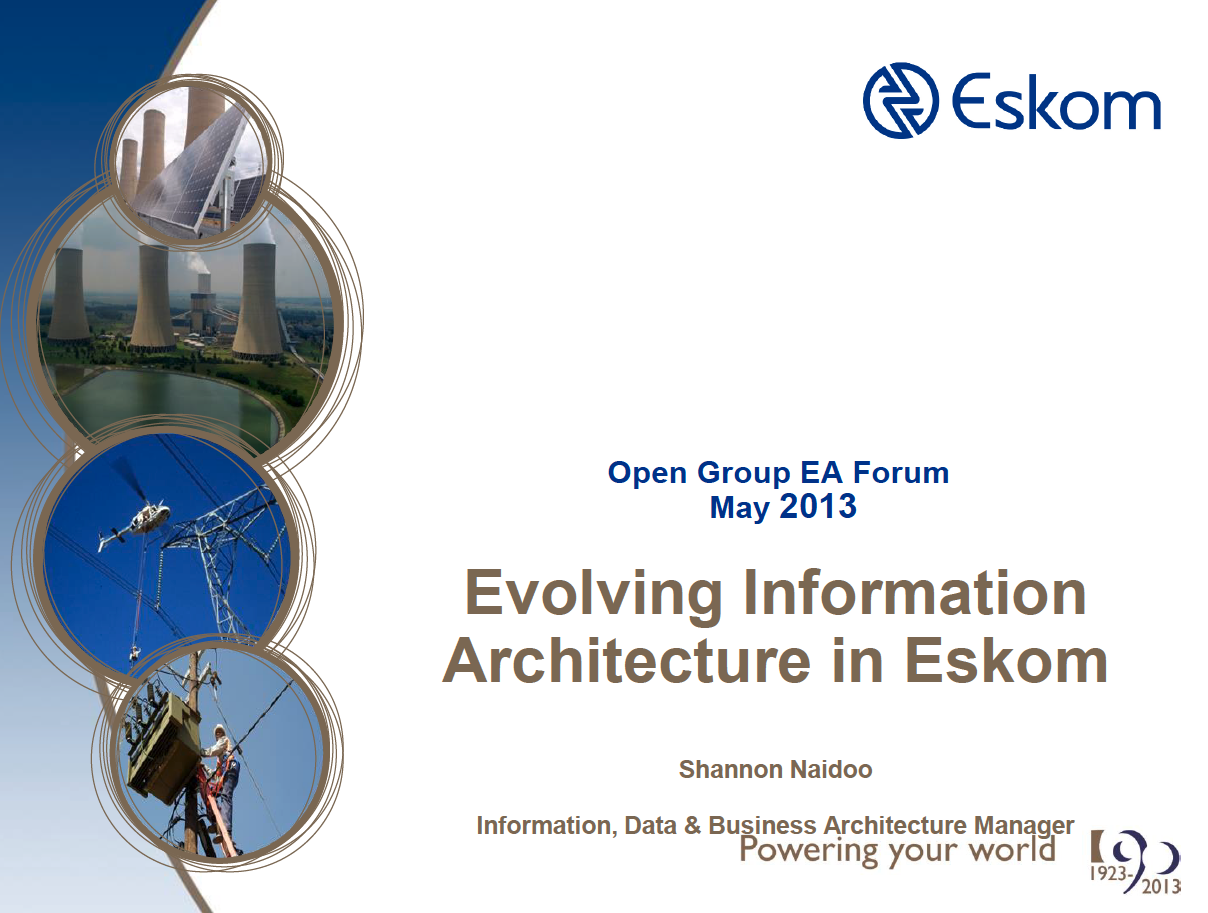
Information Architecture at Eskom
Shannon Naidoo's presentation focuses on information architecture at Eskom including a look at how master data management and data quality moved from being IT-specific, back-office initiatives to becoming frontline business initiatives with C-suite visibility.
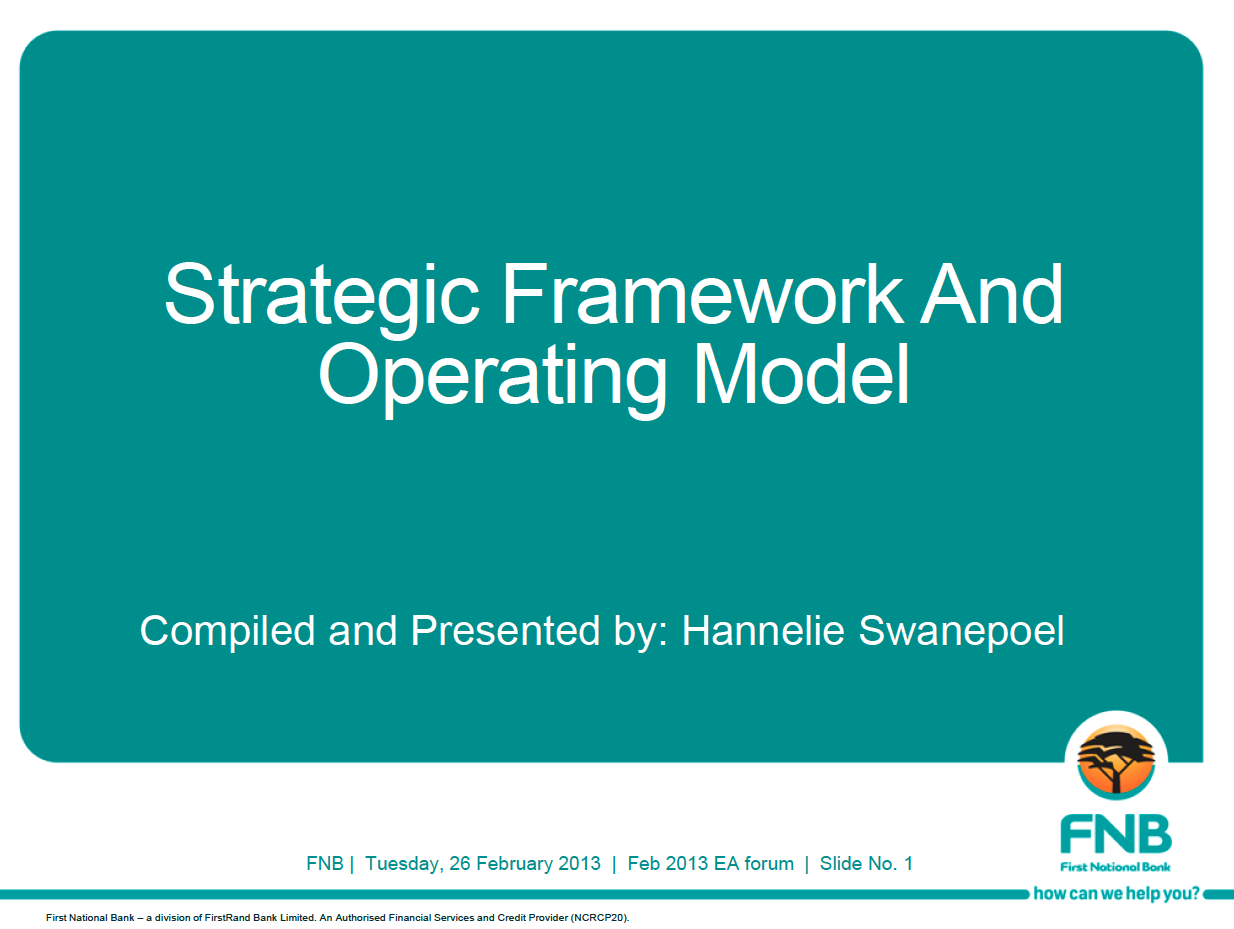
FNB’s Definition of a Strategic Framework and Operating Model
Case study of how FNB defined their strategy and operating model following the merger of two data warehousing departments. It focuses on FNB’s use of architecture principles and methods and includes some of their successes, failures and valuable lessons learned.

Application Portfolio Management
This presentation is about using a pragmatic, business-driven approach to Application Portfolio Management so as to provide quick returns by identifying application overlap and redundancy. It also touches on industry reference models and application life-cycle management.
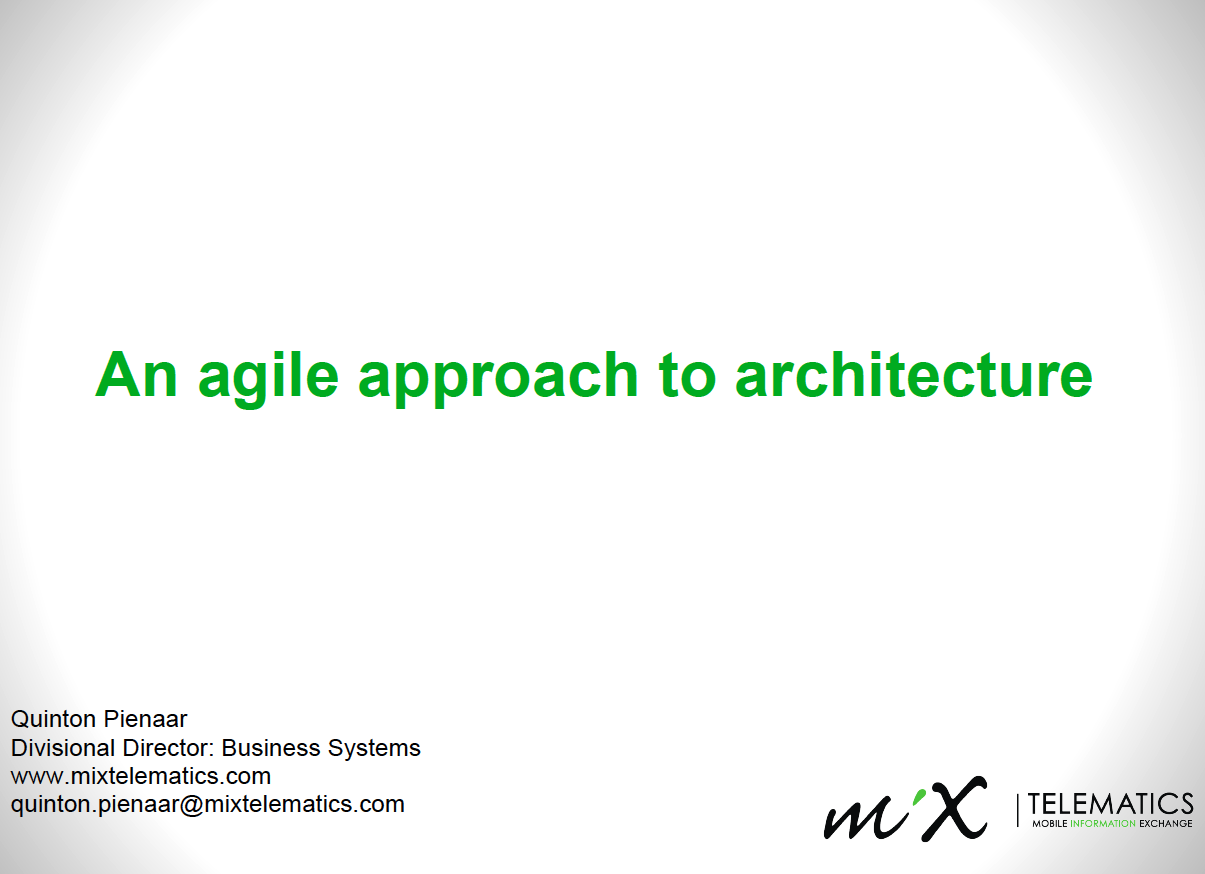
An Agile Approach to Architecture
In his presentation, Quinton Pienaar describes how MiX Telematics formalised their business operating model and modelled the enterprise processes so as to replicate them in all regions and functions across the group. He includes a look at how they combined an agile approach with the rigours of Enterprise Architecture to deliver fast results to the organisation.
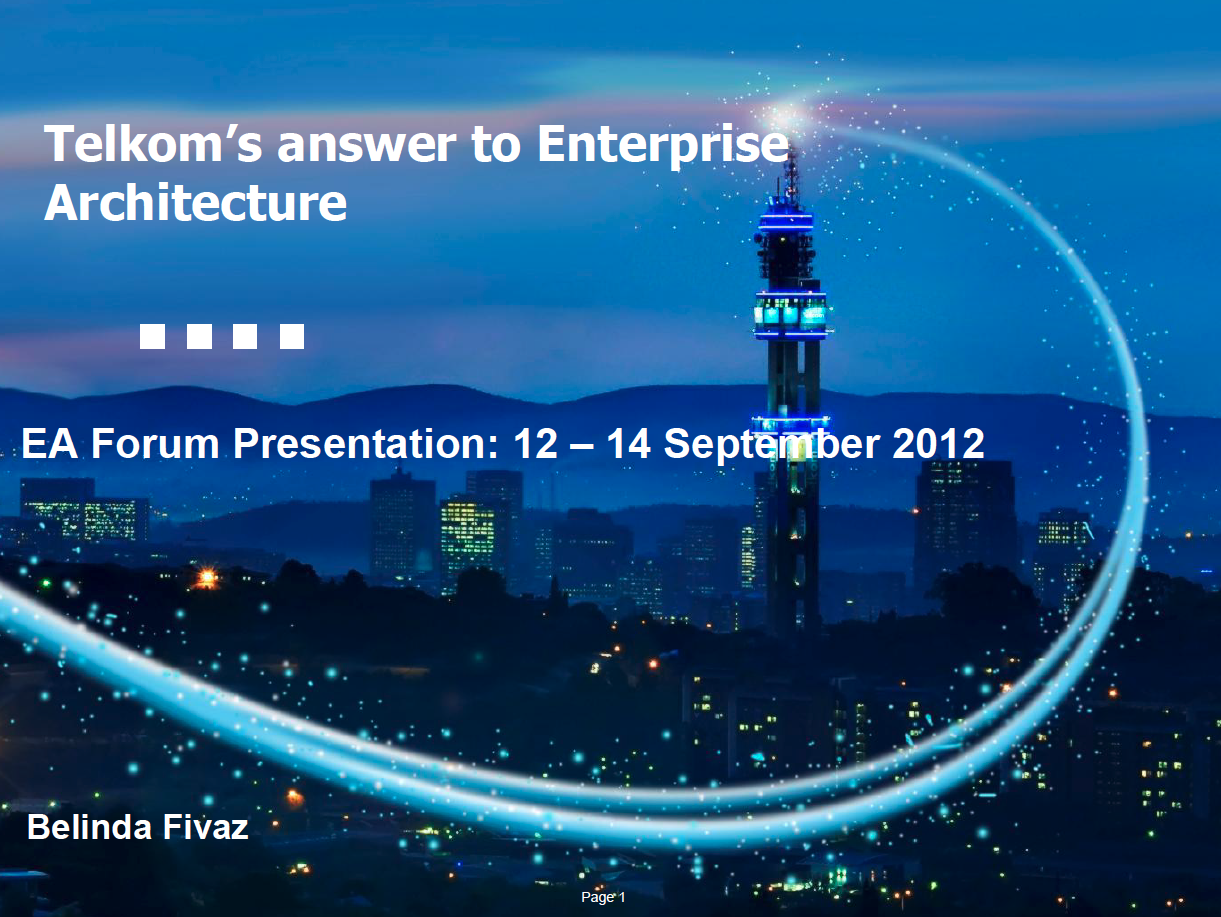
Telkom's Answer to Enterprise Architecture
In this presentation, Belinda Fivaz takes us through Telkom’s implementation journey and describes how PlanningIT has assisted in establishing TOGAF within the EA team

The Use of Modelling Tools for Enterprise Architecture
Johan Schoeman's presentation focuses on the use of modelling tools for EA and includes the typical functions that modelling tools provide. The presentation also describes the requirements for implementing a modelling tool within an EA environment, and includes a look at the modelling tool market within a South African context.

ArchiMate 2.0 A Step Towards A Common Language
Michelle van den Berg discusses ArchiMate 2.0; the open and independent modelling language for enterprise architecture. Her presentation focuses on how ArchiMate complements existing notations and standards; BPMN, UML and TOGAF

Industry Reference Frameworks: Developing a Framework for Healthcare in Norway
This presentation is focused on the Healthcare Reference Framework which The Norwegian Healthcare Authority is sponsoring. Sarina looks at the Healthcare vision and business motivation driving the development and adoption of industry reference models and includes the business case for increased South African participation.

Enterprise Architecture in Shoprite: Crafting architecture governance into IT business processes - Cape Town
This presentation provides a walk through of the architecture processes and architecture governance authorities in the Shoprite Group of Companies. It shows how the architecture processes are integrated into the strategic and operational IT processes of the organization. A live demo of the process models in the EA repository is provided.

COBIT 5.0 and TOGAF 9: EA Governance Made Practical Durban
This presentation looks at governance as the key to entrenching EA into an organisation. It touches on the mapping between COBIT and TOGAF® with specific focus on the control points required to sustain a business-appropriate EA Practice. In addition, it offers insight into COBIT 5 and how it supports EA
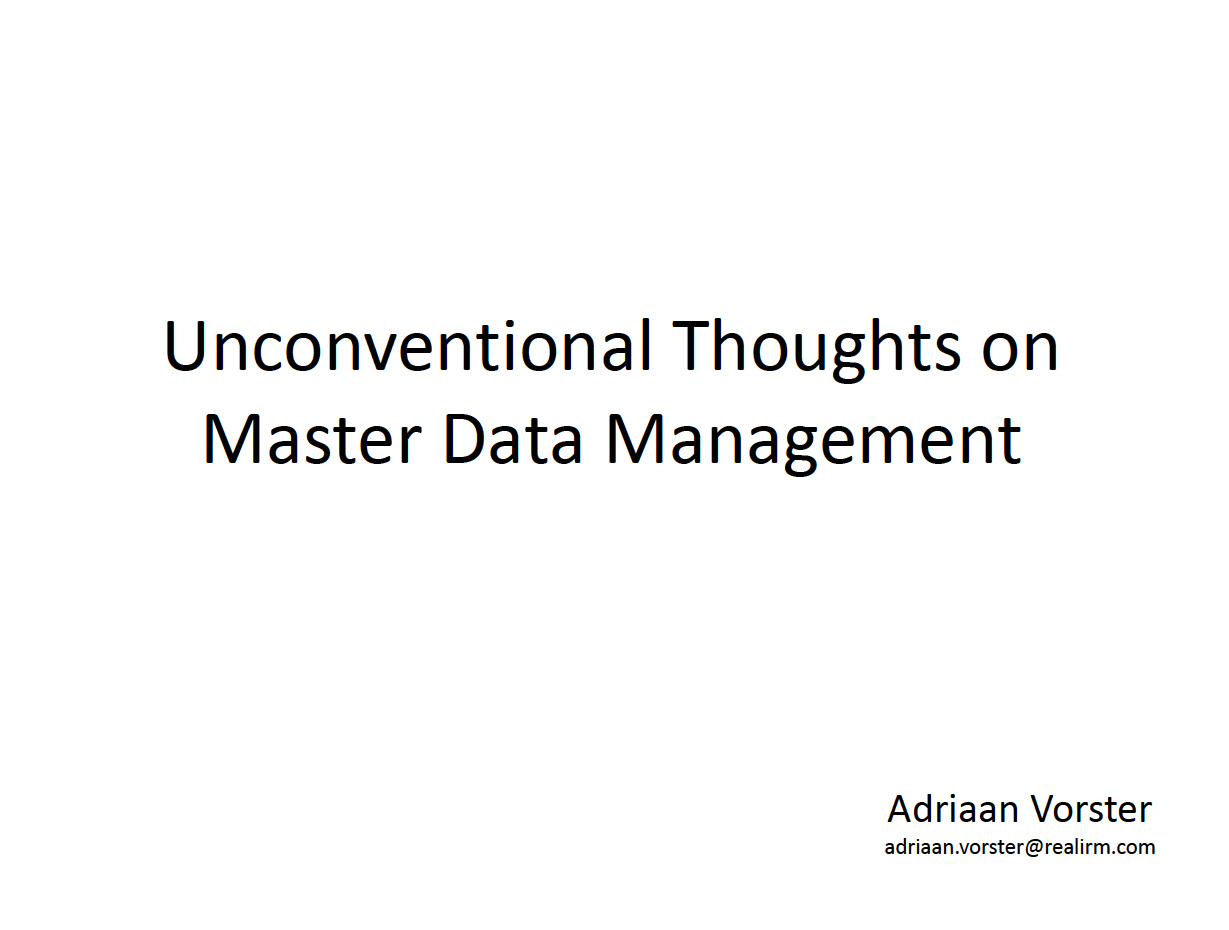
Master Data Management – The Discipline, Not the Technology
In his presentation Adriaan Vorster discusses the need to reconsider the current data management landscape and to establish mechanisms to deal with unstructured, duplicate and redundant data. He argues that the master data management problem is pervasive and that the adoption of tools promising consolidated, quality enterprise data will only partly resolve it.
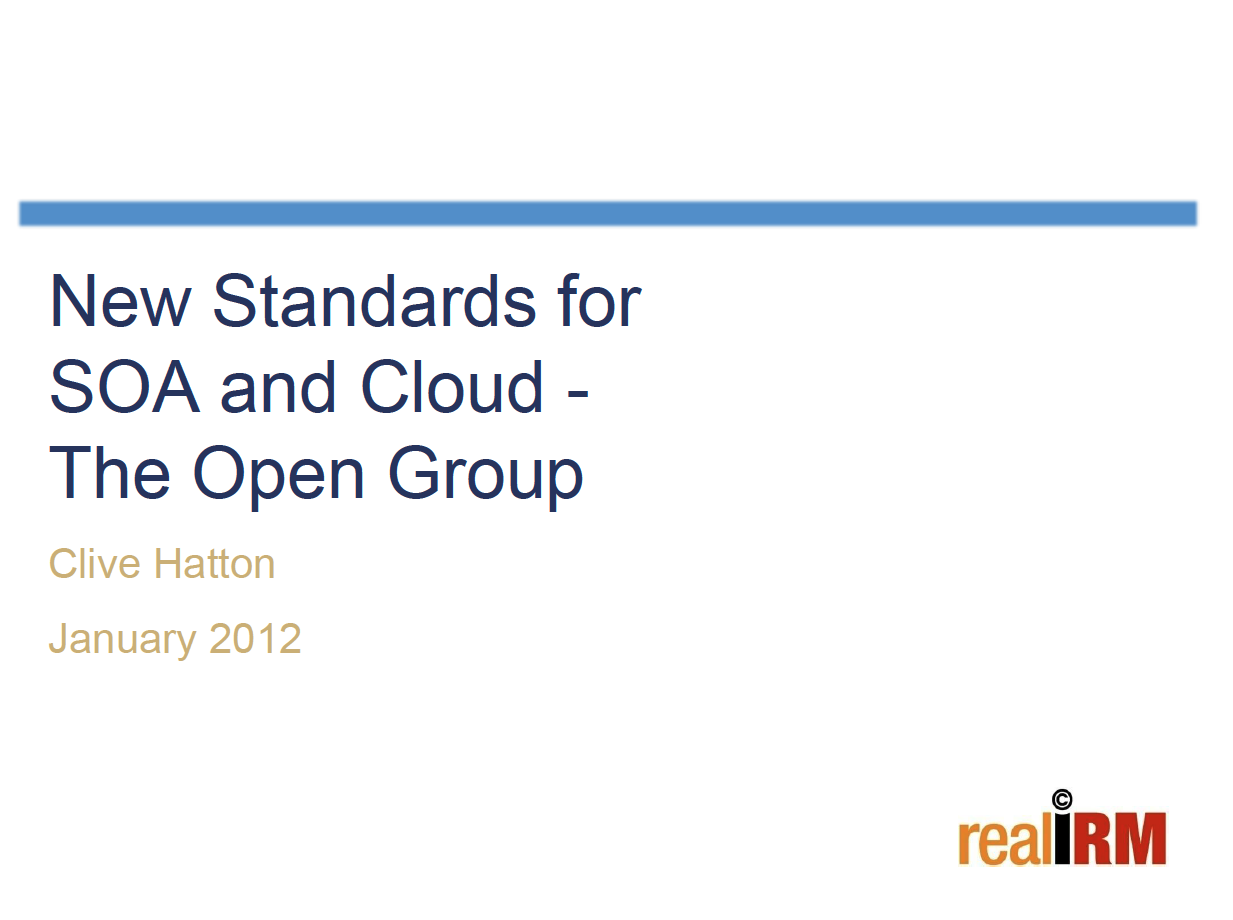
New Standards for SOA and Cloud
In his presentation, Real IRM's Clive Hatton "unpacks" The Open Group's two new standards for SOA and Cloud - the SOA Reference Architecture (SOA RA), and the Service-Oriented Cloud Computing Infrastructure Framework (SOCCI). He includes a look at what these standards mean for anyone implementing SOA or Cloud Computing and presents an argument in favour of vendor-neutral standards.
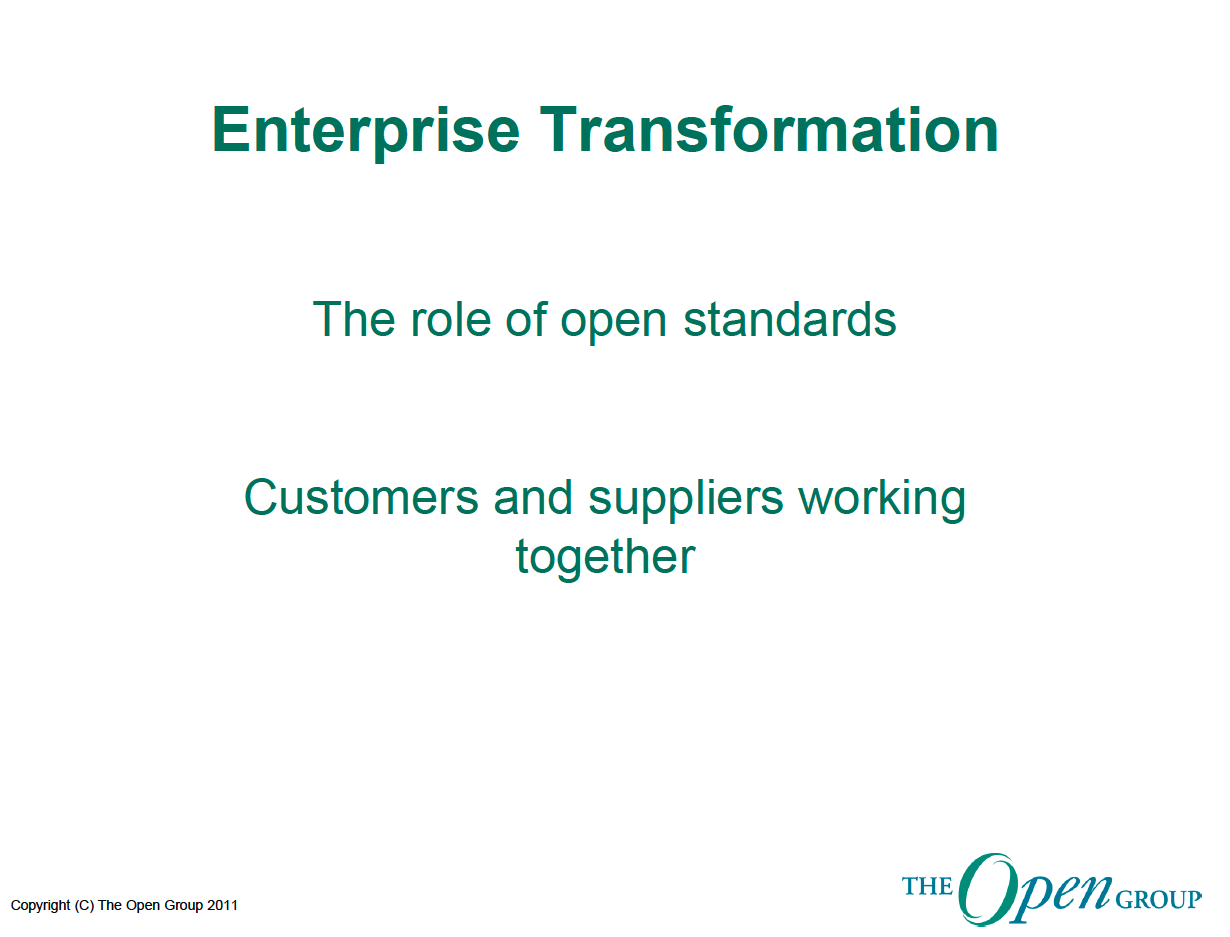
Enterprise Transformation and the Role of Open Standards
In his presentation, Allen Brown, President and CEO of The Open Group, discusses enterprise transformation. The presentation includes the following key takeaways: Setting expectations and planning transformation; The role of standards in enterprise transformation; The work of the members of The Open Group.

Parsons Brinckerhoff Makes BPM Work for Large Engineering Projects
This presentation describes how Parsons Brinckerhoff applies sound process design and a BPM workflow engine to deliver process visibility, single point data entry, and integrated reporting. It shows how this has resulted in their creating effective, transparent business processes across the business value chain and has ultimately built mutual trust among the stakeholders.
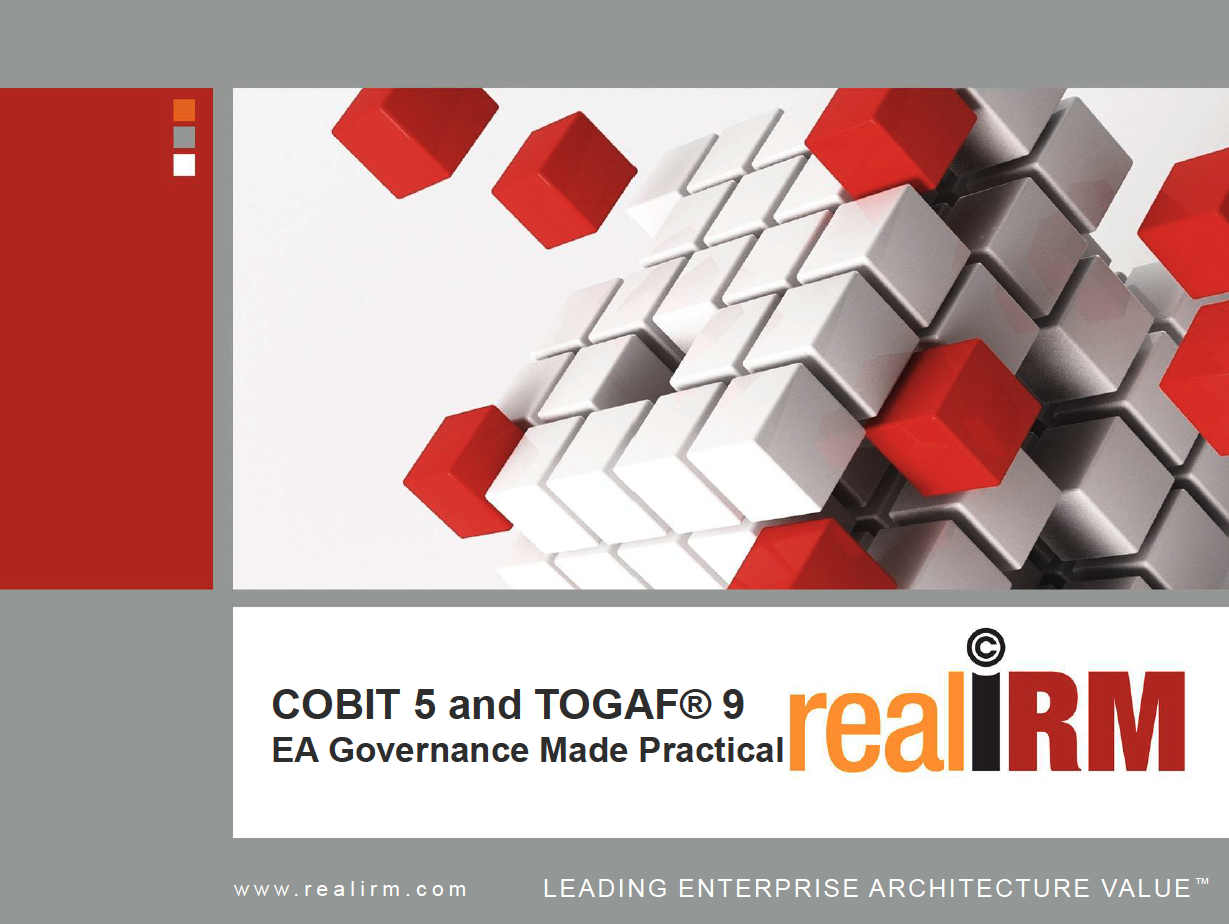
COBIT 5.0 and TOGAF 9: EA Governance Made Practical
This presentation looks at governance as the key to entrenching EA into an organisation. It touches on the mapping between COBIT and TOGAF® with specific focus on the control points required to sustain a business-appropriate EA Practice. In addition, it offers insight into COBIT 5 and how it supports EA.

Master Data Management – The Discipline, Not the Technology
In his presentation Adriaan Vorster discusses the need to reconsider the current data management landscape and to establish mechanisms to deal with unstructured, duplicate and redundant data. He argues that the master data management problem is pervasive and that the adoption of tools promising consolidated, quality enterprise data will only partly resolve it.
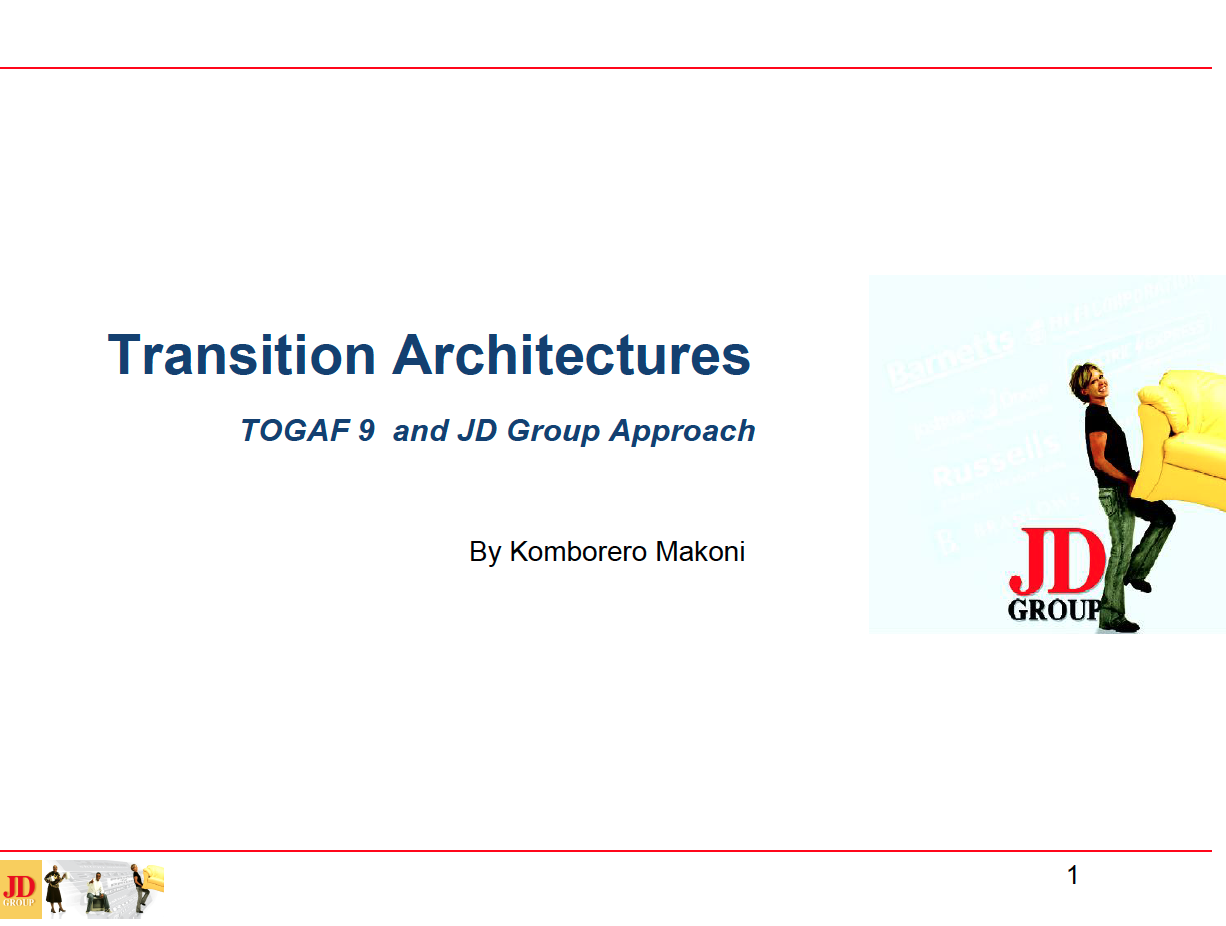
Transition Architectures
This presentation focuses on the JD Group’s Transition Architectures which document incremental states of architecture within an organisation so as to identify and manage the scope of work during a period of change. These Transition Architectures are based on the TOGAF®9 framework and principles, and the presentation shows the components used when defining them.

TOGAF / GWEA Case Study – SEDA’s Approach to EA
This month’s EA Forum is a look at how SEDA developed an Enterprise Architecture Anchor Model that is in line with the Government Wide Enterprise Architecture (GWEA) version 1.2. It touches on the work that was done and how the various frameworks and methodologies - particularly TOGAF® 9 and the Zachman Framework - were used.

"Do You Speak SOA"?
This presentation looks at The Open Group’s recently announced SOA Ontology Technical Standard. It focuses on how the Ontology can be used to understand SOA, and more importantly, to set common definitions and interpretations of key concepts that can be agreed and used with others in the company and between organizations.
